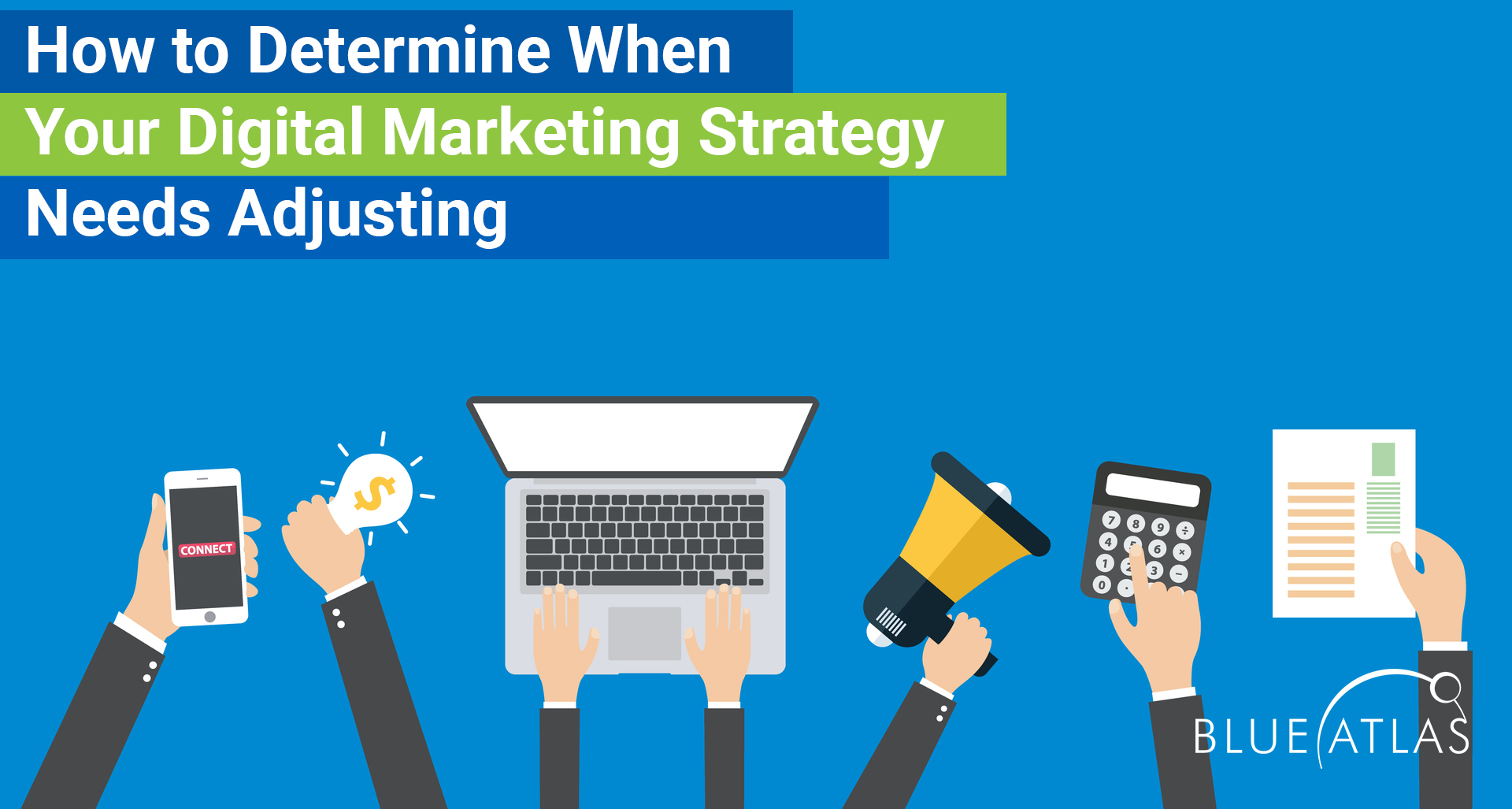When businesses set up digital marketing to enable online sales (which can take a significant investment in resources), a common bit of advice they get from agencies is, “Be prepared to analyze and adjust your strategy over time to keep improving it.”
But while organizations may be prepared to do this, it can be difficult to know exactly when to make digital marketing changes. What signs demand action? Let’s go over a few methods of analysis and what to watch for.
Costs Per Lead is Too High
Cost per lead (or cost per acquisition) is one of the best indicators for brands repositioning ongoing digital efforts. One of the things we hear often is, “Online sales are acceptable, but we are paying too much to get those sales, and that needs to change.”
Assuming that enough time has been given to see changes since the marketing campaign began, this usually means there is a problem with cost per lead. It’s time to break down marketing campaigns and budget by channel – social media, online ads, email, and so on. Find out where cost vs. lead comparisons are the worst and change the strategy for those channels. That could mean finding more effective ways to spend on and target ads, or decrease the time spent on channels that aren’t showing many results. Cost per lead is so important, it’s a good idea for businesses to keep track of it at regular intervals to see if changes need to be made.
There’s a Sharp Lead Drop-Off Before Checkout
Traffic to lead conversions are valuable throughout the sales funnel, especially once leads reach your website: You always want good analysis on how traffic behaves on your site and if it looks like they are encountering roadblocks (poor menu design, unable to search for products effectively, etc.). But we encourage busy online companies to watch for lead drop-off before checkout, especially if items are already viewed or in the cart. If this happens, it’s a sign something is going wrong with how your e-commerce store is set up. That could include:
- A confusing checkout process that needs to be revamped
- Poor payment options at checkout that need to be expanded
- Disappointing shipping costs or too few shipping options
- Product descriptions with too little useful information
Your Competitors are All Making the Same Sort of Changes
If every competitor you watch is making the same sort of online changes, but you haven’t considered those changes yet, then it’s time for alarm bells to go off.
These changes can take many forms. If all your competitors have set up social media stores on platforms like Facebook (currently called social commerce), that’s a sign your brand should enter that space, too. If similar sites are offering bundling options but you don’t, that’s an option you need to consider. Likewise, if all the other sites that buyers are looking at offer free shipping, but your site doesn’t, that calls for change.
A business doesn’t have to copy everything competitors do – that can even dilute the brand over time. But it’s important to monitor key online competitors and note when they are all moving in a specific direction. That’s a sign it’s time to take action.
Social Engagement is Poor Compared to Expectations
This indicator can be an alternative to cost per lead studies for companies that are investing a lot in their social media presence. If the amount of social signals you’re receiving – likes, comments, shares, and similar interaction – is lower than you’d like to see and not growing, then something must change.
This trouble with social engagement typically has two potential causes. The first is that your brand is active on the wrong channels – there’s not enough presence on the social media platforms that your potential customers areusing, which means it’s time for more research and then redirection. The second common problem is that content being used on social isn’t capturing interest, whether because of low frequency, lack of certain media, or efforts that miss the point. A little practice with good social tactics can put this right.
Retention on Online Purchases is Low
Are few customers coming back after making their first online purchase? That’s a problem, especially if they’re choosing to be loyal to other websites instead. It’s time to take a look at your customer loyalty programs, your follow-up product targeting and cross-selling, and retention tactics in general to find out what will work better.
Local SEO Has Been an Afterthought
Local SEO is now a core part of online visibility, and so needs to be a core focus of your strategy. All local listings – especially important search listings like Google My Business – should be verified, completely filled out, including photos, and updated regularly. Accurate local contact information should also regularly be included in your marketing content.
Traffic to Your Website is Falling Instead of Growing
This is one of the most obvious signs that something needs to change – we don’t need to tell you that it’s a problem! But Blue Atlas Marketing can help you figure out the solution, which means taking a close look at traffic analytics to see where web traffic (and isn’t) coming from. Are your ads not bringing in any clicks? Are organic searches not bringing up your website? We can help pinpoint the problem and craft strategies to directly address it.
Conclusion
Remember, the digital marketing world is continually changing, and past habits may no longer be as effective as they once were. Always take time to regroup and see what directions your marketing needs to move in. We can help save time and money whenever you’re ready.





